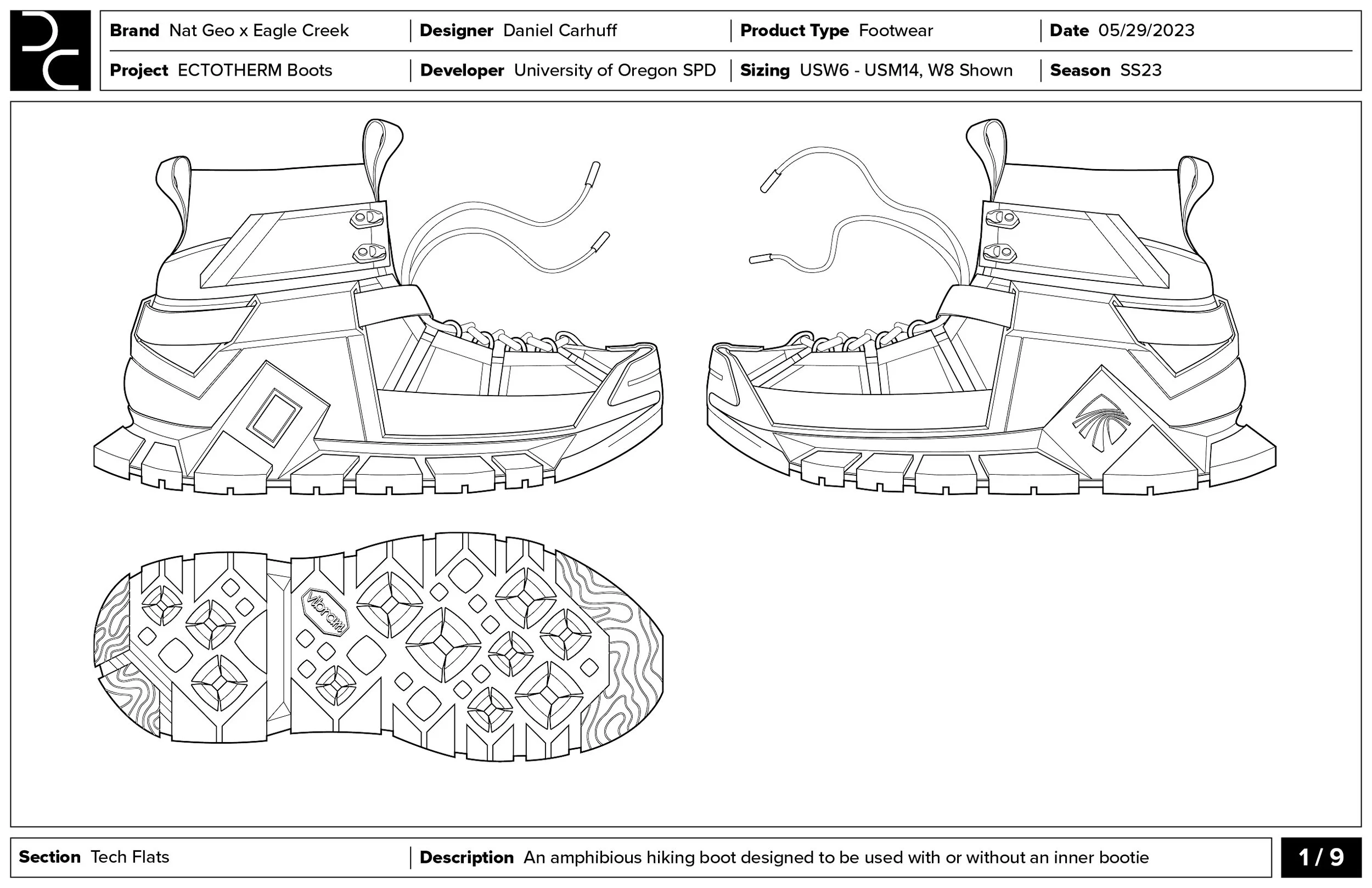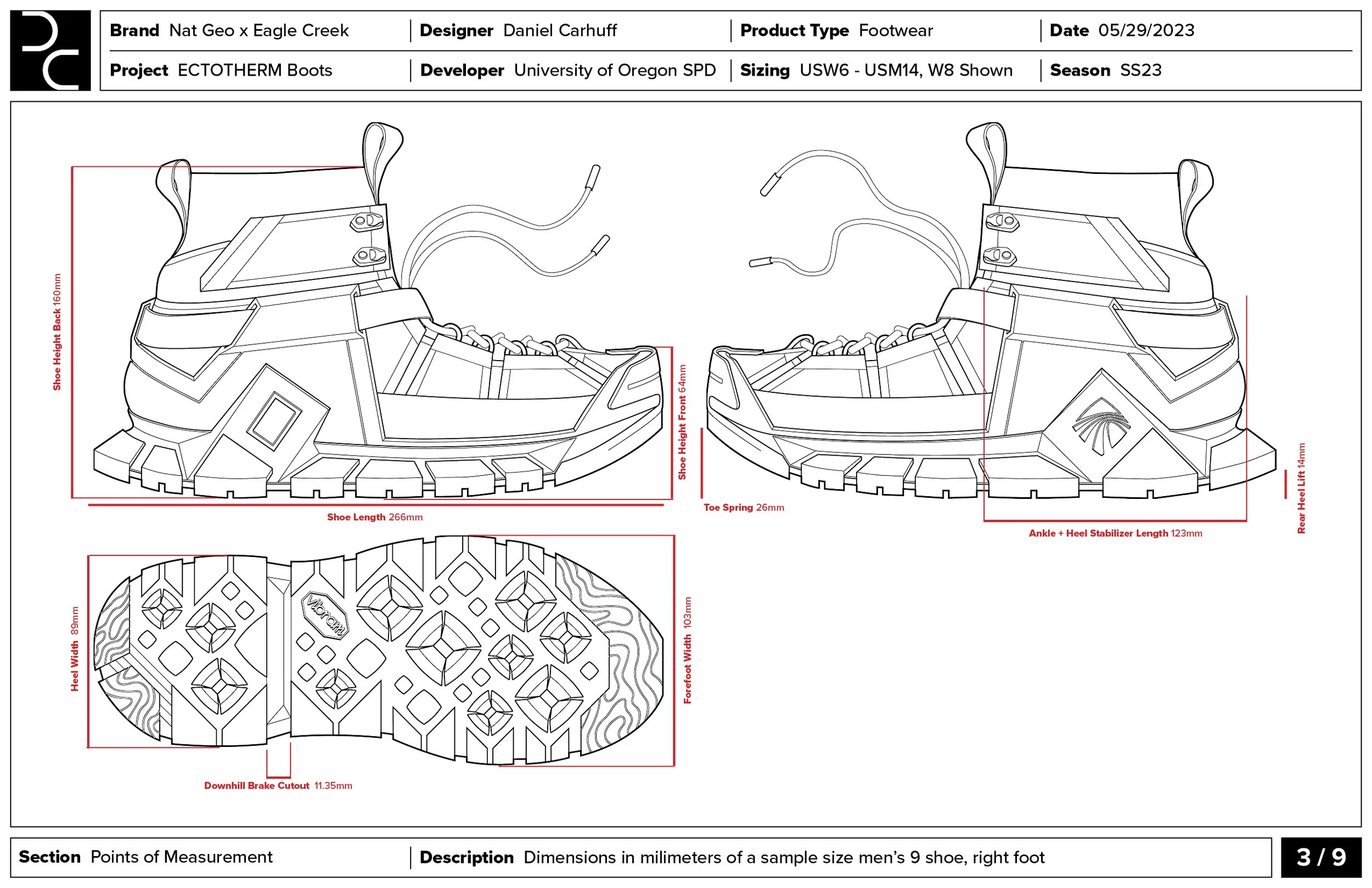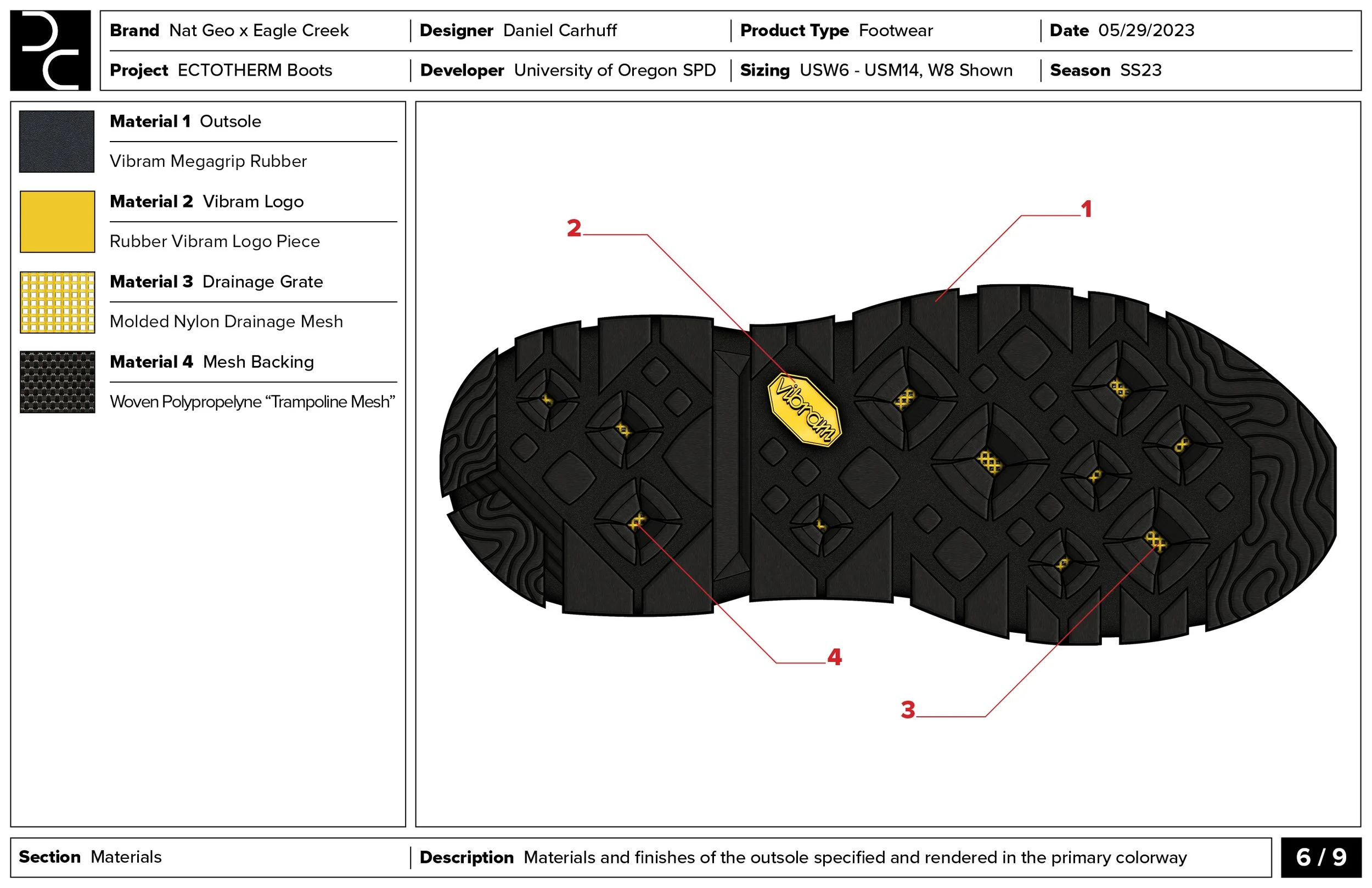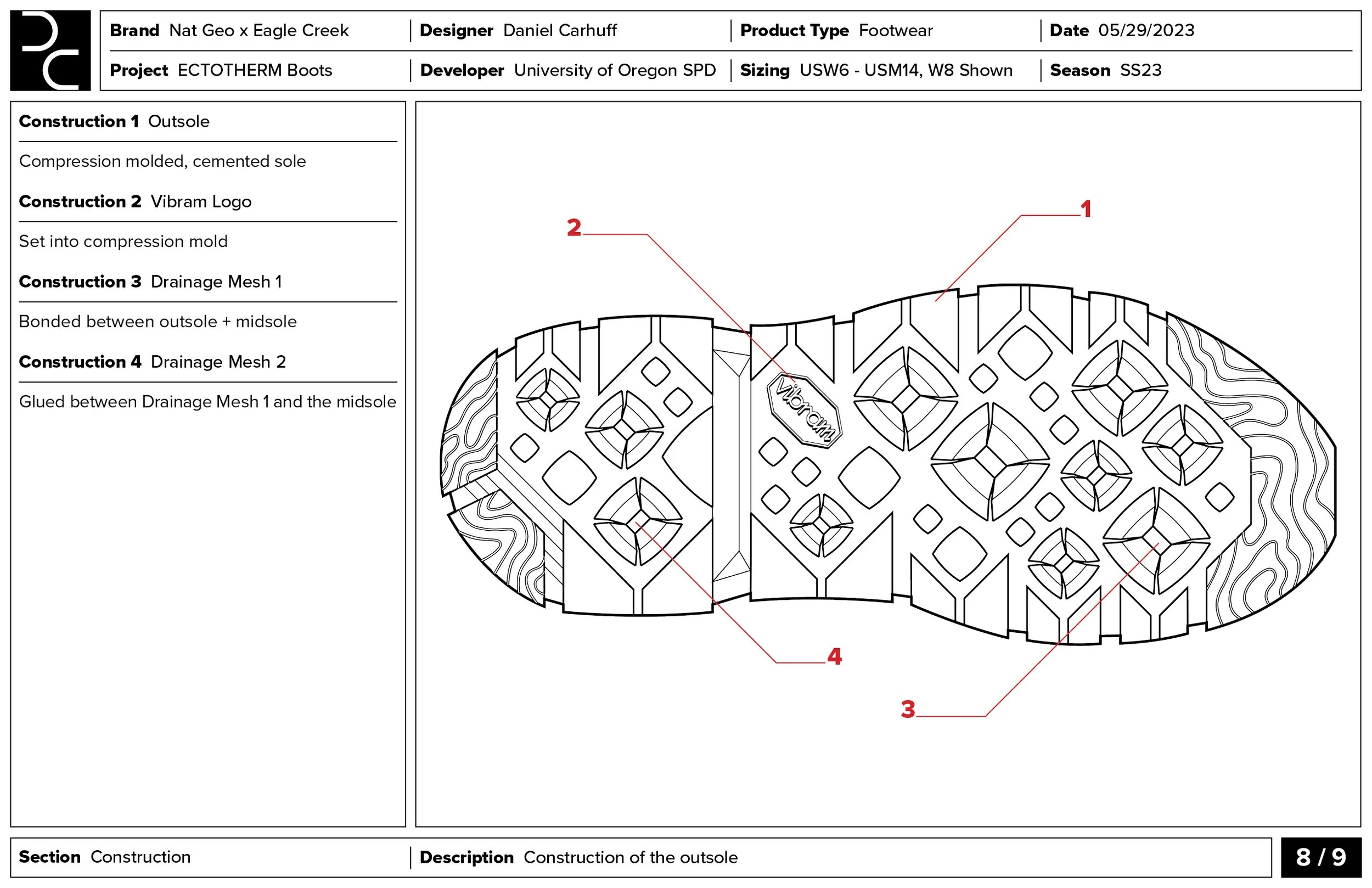e c t o t h e r m
// shapeshifting outdoor footwear for FIELD HERPETOLOGISTS
FIT Sport Design Award Winner 2024 - footwear and innovation
https://fitdesignawards.com/winners/fit/2024/302/0/
https://fitdesignawards.com/winners/fit/2024/358/0/
A sport product design specific honor awarded by a jury of industry professionals and esteemed educators.
Fall 2020 (Research) - Spring 2021 (Design) - Ongoing
How can the divergent habitats of Maryland's reptiles and amphibians lead to a convergent footwear solution that promises more efficient, comfortable, and safe field research?
ECTOTHERM's purpose is to properly equip adventurous outdoor professionals and enthusiasts that need to traverse varying terrain in diverse climatic conditions without the need for multiple types of footwear. The design of this boot was inspired by and modeled after the unique use case of Maryland herpetologists. Herpetologists are those that study reptiles and amphibians. Finding herpetofauna is no easy task, often requiring one to traverse mountains, wade through rivers, cross miles of trails, trudge through muck, and push through off trail environments in a single outing. Maryland serves as a microcosm of the rest of the United States, excluding deserts. This means that it has an extremely diverse set of environments (and the animals to go along with it) that make it as challenging as it is interesting- a perfect testbed for tailoring the ultimate adventure footwear solution. With an instantly convertible and swappable waterproof liner and an exterior base boot that can tackle wading through rivers and scaling talus slopes, this boot can replace Hiking Boots, Wading Boots, Canyoneering Boots, Water Shoes, Mountain Boots, Ankle Gaiters, Knee-High Boots, Desert Boots, Walking Shoes, and more while providing a unique set of versatile features that elevate this design above any single existing option. The pop-up expandable waterproofing portion of the boot is replaceable, swappable, and can dry externally. The materials of the main boot are designed to withstand chlorine decontamination washes and harsh rock. Conversion between dry and wet use-cases can be accomplished in seconds, and the boot can be used with existing 3rd party accessories such as hip waders with the waterproofing portion removed. Additionally, with the waterproofing portion removed it becomes a highly breathable and quick-drying boot ready for warm water features and blazing deserts. The outsole and midsole are designed to optimize surface area and terrain adaptation with flexible sidewalls and stiff support where needed. TPU protective and supportive elements are carefully placed where needed, and removed where they are not. Speed lacing and an elastic gaiter complete the lockdown.
Project Video
curious?
This video explores the entirety of the project, from actual user accounts to a branded commercial highlighting the boot’s features.
Due to the pandemic, our thesis was delivered virtually using a pre-recorded video format. Taking advantage of this, I did my best to create an exciting journey that will leave viewers of all interests feeling inspired to head outside.
Initial Concept Directions
Direction 1: Accessories
Assisting existing footwear in efficient and light approaches
Direction 2: System
Integrating greater function and flexibility with less bulk and waste
Direction 3: Boot
Trying to do something new with tried and true
Expandable Gaiter Concept Testing
Chosen Direction: Direction 2 + 3 Hybrid
After a successful feedback session with my user group and continued 2D and 3D exploration I have decided on a hybrid direction. I will primarily be focusing on a single boot with no compromises, however I have decided to make the expandable gaiter system a replaceable inner bootie. Looking at feedback from my user group, it is clear that a compromise in the waterproofing, weather accidental or from damage, should not compromise the use of the boot. This has inspired me to ensure the design and materials used in the main boot make it function like a ruggedized canyoneering boot, offering the support and protection needed for dry rocky slopes while incorporating the drainage and breathability necessary for a boot meant to be submerged. This also lets the boot function with user’s preexisting hip waders for times when knee-deep wading is not enough and extensive wading is planned.














